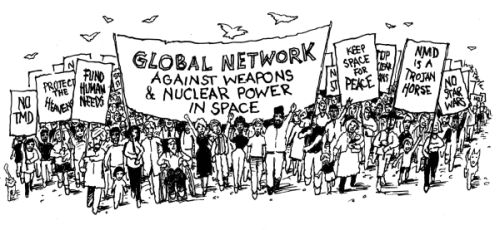CCST 227: Art and
Soul Of Social Change
Art, Activism and New Media in Popular
Resistance
Course
Description
3Units
In this Course students will explore and
develop
an understanding of the ways in which art can facilitate positive
change,
public dialogue, and build community. Students will explore
the relationship between ahimsa, (nonviolence) art,
activism and social movements for positive social change. First,
we will analyze the theoretical underpinnings of the ahimsa/nonviolence
paradigm. Next we will examines how art can address pressing
social, political, ecological and
material issues and look at the works and the recent
outpourings of artists/activists’ protests and resistance that are
addressing issues of the environment, civil rights, freedom and
equality, globalization, human rights, health care, and social justice
among others. We will analyze how, the transformation of southern
spirituals into freedom songs during the civil rights movement, ACT
UP's use of visual art in the campaign against AIDS, and the literature
of environmental justice, vividly demonstrates that cultural work has
been a vital medium for imagining and advancing for social change, and
that social movements affect cultural and aesthetic practices. We will
also focus on some of the recent racial and political conflicts that
have been significantly reshaped by the proliferation of digital media
and the Internet as a means of instant dissemination of images, texts,
and audiovisual expressions. The focus will be on considering the ways
in which the cultural texts generated by resistance movements have
reshaped/reshaping the contours of specific cultures. The course aims
to address
some important questions like, how do artists address social issues?
How can art serve as a force for creating public dialogue? Are there
different aesthetics for art with a social or political message? And,
can art transform lives? Through class assignments, class participation
and research projects students will
address the above questions.
Goals and objectives:
The primary goal of this course is to explore and develop
understandings of the ways in which art can facilitate positive change,
public dialogue, and build community. Through active participation in
course activities and assignments, students will be able to:
1. Learn how nonviolent social movements have
worked
in countries around the world and to be able to use basic vocabulary,
concepts and principles of
conflict management and resolution in the practice of nonviolent action
in social movement.
2, Identify artists who are creating work in these arenas
and describe
the aesthetic, social, and cultural significance of their work
2. Understand some of the issues related to public art
3. Discuss the aesthetic implications and challenges of art that
straddles the realms of the political, social, or cultural spheres
4. Explore the changing role of the artist in society
5.Collaborate with others to affect positive change
Required
Readings:
1. T.V. Reed, The Art of Protest (Univ. of Minnesota Press, 2005)
2. Zinn,
Howard, Artists in Times of War (2003)
3. John Paul
Lederach, the Moral Imagination: The Art and Soul of Building Peace
4. The
Power of Non Violence: e- books
Suggested Readings
- Zinn Howard
, The power of Non Violence, 2002 Beacon Press
- Bacon,
Barbara S., Animating Democracy: The Artistic Imagination as a Force in
Civic Dialogue (1998)
- Felshin, Nina,
But Is It Art? The Spirit of Art as Activism (1995)
- Glaser, Milton,
The Design of Dissent (2005)
- Grande, John,
Art Nature Dialogues: Interviews with Environmental
Artists (2004)
- Kester, Grant,
Art, Activism, and Oppositionality (1998)
- Lacy, Suzanne,
Mapping the Terrain: New Genre Public Art (1995)

